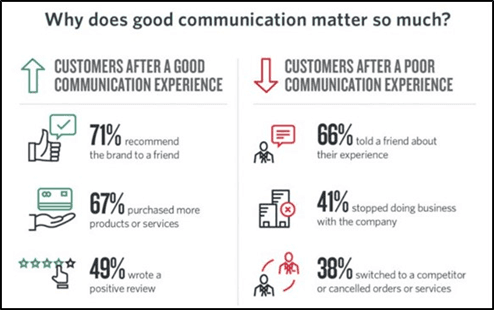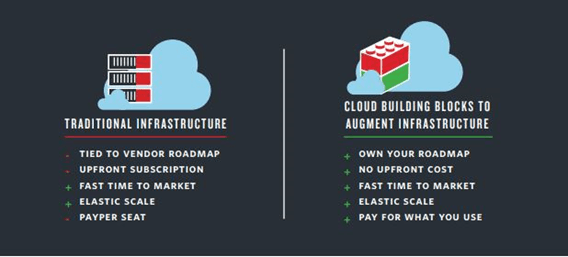What Is an On-Premise Contact Center?
An on-premise contact center is a model where the customer houses all the required software and hardware. Companies that use an on-premise system generally employ or contract specialized IT staff to configure, upgrade, and maintain the contact center.
The on-premise contact center or legacy contact center relies on inflexible and proprietary platforms from vendors such as Cisco, Avaya, and Genesys. And with everything companies need on-site, it's no wonder McGee-Smith Analytics estimates about 85% of contact center agent seats will remain housed by on-premise models.
However, recently, cloud-based contact centers emerged to offer an alternative. Some of the most prominent features of a cloud-based model are that it places core contact center services off-site and customers remotely connect to the center via the internet or by phone.
But this is only the beginning for cloud vs. on-premise based contact centers. Read on to learn the features, drawbacks, and differences of on-premise and cloud contact centers.
Most legacy contact centers haven't aged gracefully. After all, inflexible, expensive contact center infrastructures can't scale or adapt to evolving customer expectations and digital innovations. Even worse, with mounting operating expenses, there's little room to invest and improve. The result is often a poor customer experience that devastates businesses: 56% of respondents of Twilio's 2022 State of Customer Engagement Report said they would no longer patronize a business after a frustrating customer support experience.
Additionally, on-premise license fees are expensive. For example, the annual maintenance can cost about a quarter of the license cost, while changes to the system—such as adding a new channel—can become so expensive it's effectively impossible for businesses to afford.
Beyond costs, specialists trained in on-premise systems are increasingly hard to find and hire. As a whole, it's more expensive to run an on-premise contact center when it requires heavy virtual machine power for high availability. Fortunately, the modern cloud contact center answers the legacy problem.

While custom on-premise hardware and software models provide customization, integration, reliability, and scale, these are also pricey and difficult to deploy. In fact, the benefits of custom on-premise contact centers appear only when companies invest heavily in professional services or trained developers. Not to mention, with on-premise contact centers, deployment of new features takes a lengthy 24 months, and every change takes an average of 9 months. Such infrastructure can't keep up with changes in consumer behavior.
Lastly, because many on-premise systems run on outdated data technology and infrastructure, which impacts reliability, performance, and security, businesses must choose a modern alternative.
Companies frustrated with existing on-premise contact centers will inevitably look to augment or replace them. Some will augment existing contact centers, which typically means adding functionality and channels using a cloud-based product like Twilio. And others will replace the existing contact center experience to better match business requirements. Next, we'll delve into both.
Software as a service (SaaS) models help businesses subscribe to solutions, while Contact Center as a Service (CCaaS) providers offer hosted software and maintenance of servers, databases, or code. Customers access these solutions through the internet and pay for usage. And while these products offer limited customization and are quick to set up, unlike on-premise contact centers, customers provide hardware.
API-based companies like Twilio offer a third option: the flexibility of an on-premise solution with the speed and ease of a SaaS solution. With pay-as-you-go APIs, businesses find the annual costs of on-premise maintenance alone far cheaper. Not to mention, these APIs also make businesses agile and strengthen deployment.
For companies that don't want to build with APIs and find CCaaS options too inflexible, there's another option. Platforms like Twilio Flex help companies build at an unprecedented speed while customizing a unique design for specific customer and business needs. Although Twilio Flex is more intuitive than building with APIs, it's still an open platform for custom software development rather than an out-of-the-box solution.

While on-premise and cloud contact centers offer customers similar functionality, there are notable differences:
- Cost: On-premise centers typically have a high, fixed price on a per-license basis. Cloud contact centers, on the other hand, offer lower lifetime costs with a subscription.
- Speed: Hardware installation for on-premise centers can take months, presenting bottlenecks for customers. Alternatively, you can set up cloud-based centers in mere hours.
- Access: Software installations on physical hardware limit on-premise centers, whereas cloud centers are accessible remotely. Additionally, internet connectivity gives cloud centers faster updates and maintenance from providers unavailable to on-premise centers. This helps cloud centers remain reliable while on-premise centers face physical challenges like bad weather and downed power lines.
- Workflow: Cloud center agents enjoy more productivity with a single, convenient application for all their duties, as opposed to clunky on-premise centers that separate operations across applications. Additionally, cloud centers spend less time transferring customers to other agents than on-premise centers, thanks to automations that quickly direct callers to the right agents. Customer relationship management software and ecommerce platforms also integrate more seamlessly through the cloud than on-premise contact centers.
- Security: Companies with on-premise and cloud-based centers tend to reinforce the centers with high-end security. However, cloud contact centers deliver security updates and solutions more quickly through connectivity.
Now that you've seen the differences between on-premise from cloud contact centers, it's clear why the future of business favors the flexibility and convenience of the cloud. Request a demo of Twilio Flex to learn how you can create an innovative cloud contact center that meets your growing company's needs.